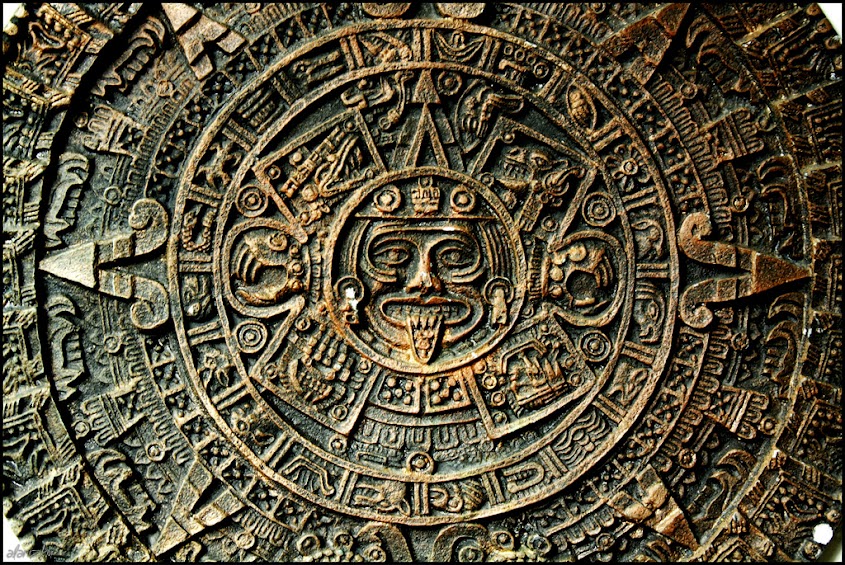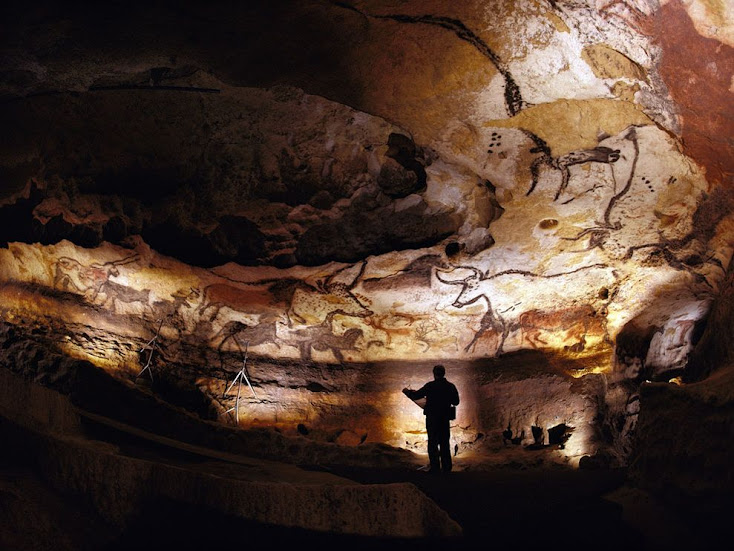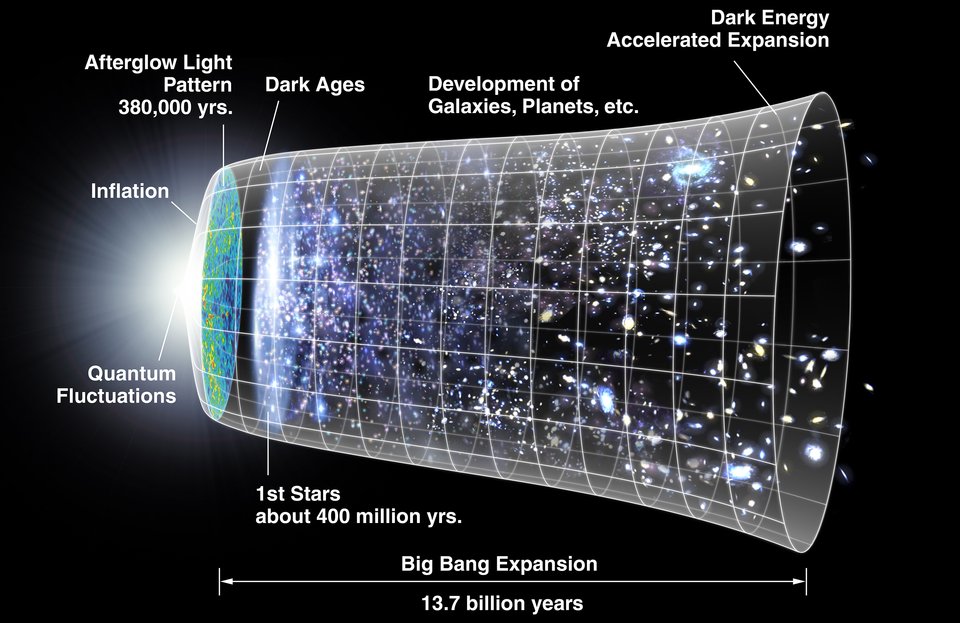The Panspermia Hypothesis
By - Brett Vollert
They tumble through the blackness of space; frozen and isolated. Their solar systems have abandoned them and the light from the star that gave them birth fades into the void of interstellar space. Perhaps this journey began with tragedy. A distant world in turmoil. It's inhabitants scrambling to save their oasis of life from an impending collision. But to no avail. And from the ashes of this scattered world falls a freeze dried microcosm; a comet carrying with it the remains of its parent planet. And it is headed for Earth. Not an Earth we would recognize; instead a young and barren Earth. The Sun slowly melts the comet's frozen skin during its approach; extending a tail 500 million kilometers long behind the solid nucleus. The impact is just one of many during this adolescence of planet Earth. The first billion years of our planet's existence are a violent chaos as it clears our orbit of floating debris left scattered from the explosion of a dying star. But this comet is from an alien system and it brings with it the building blocks of life. Seeding this new world with the ingredients of "us." A first step in our long journey; a journey wrought with time. It was not the blink of the eye or a flash of light that then gave rise to all of humanity. It was the deep breath of a perfect storm, building to crescendo. This is the theory of Panspermia and this is our modern day creation myth.
Sacrilegious and blasphemous as it may seem, this theory has actually been around longer than most religions. First proposed in the 5th century BC by the greek philosopher Anaxagoras, a thinker far ahead of his time. However, the idea took the support of the modern astronomers Sir. Fred Hoyle and Professor Chandra Wickramasinghe to once again gain momentum; along with the help of some ground breaking experiments and discoveries.
We are still visited by extraterrestrial debris quite frequently, exemplified by the recent meteorite that exploded over Russia and the near miss fly by of asteroid 2012 DA14 that soon followed. Many of these asteroids carry with them complex organic molecules and even amino acids. Amino acids are the links in the protein chains and often referred to of as the building blocks of life. Many astrobiologists claim these amino acids are suggesting that life could have been present elsewhere in the universe. This is very similar to seeing the skattered parts of a machine and assuming that the machine had once been operational elsewhere. But no machine is equal to the sum of its parts. We needed to eliminate all doubt, we needed to leave earth.
NASA's Deep Impact mission was on a collision course with comet 9P/Temple. The United States had launched a spacecraft whose sole purpose was to crash into a comet and study it's structure and composition. This is yet another example of the childlike souls of scientists who simply want to break something apart and see what is inside. When the craft collided at 23,000 miles per hour the immense debris cloud proved to contain a large amount of water and organic compounds. Many speculated that Deep Impact had found a starter kit for life in that comet but this mission was far to violent to find life itself. The less suicidal mission named Rosetta will attempt to instead land safely on comet 67P/Churyumov-Gerasimenko in May 2014. This mission will be able to give us a more precise idea of what a comet is chemically and allow us to witness any chemical reactions, biological or non-biological, that might be taking place on these bodies.
Recent research on meteorites from Antartica and the famous Muchinson meteorite at NASA Goddard has found that amino acids aren't the only things found on comets. Nucleobases (adenine and guanine) are contaminating the solar system as they hitchhike upon comets. These nucleobases are key molecules involved in the structure of DNA and are more foundational to life than even amino acids. If amino acids are the building blocks of life, then these nucleobases are the letters in the instruction manual. But the building blocks of life cannot be mistaken for evidence of life itself and the presence of these letters is not the same as having a ordered sentence. In fact, this study confirmed the irrationality of that assumption. Many of the nucleobases discovered are not found in any biological system, which suggests that either there is some strange life that formed them or that these compounds formed in a non-biological fashion. The latter seemed more likely after laboratory experiments proved that a similar mix of organic molecules can be produced through reactions involving hydrogen cyanide. This evidence convinced the team of NASA scientists that the compounds found were most likely not biological in origin but were instead produced by chemical reactions on the comet. So this is not our falling microcosm of a once living planet. However, this study still remarkably proves that meteorites can transport both the building blocks of proteins and DNA! Even without the understanding of how those materials can independently materialize into a living organism, we now know that they were at least present for that mysterious event.
But what if I told you that all of life is left-handed? That while the universe may have a mix of right and left-handed amino acids, our bodies only function using the left. This might be the largest hurdle for the theory of panspermia to overcome. All amino acids appear in these two mirror image forms. Essentially the atoms in the molecules are the same but arranged in a mirror image pattern. The forms are chemically identical, almost impossible to isolate and when an organism dies the left handed amino acids start to spontaneously convert back to a one to one ratio through a process called racemization. It is as if life itself is characterized by this left-handedness, so much so that we can even use this process to date deceased organisms.
Scientists were befuddled by this affinity for the left-handed versions of amino acids in life, but once again a clue fell from the skies, this time above British Columbia's Tagish Lake in 2000. This meteor contained two amino acids used in life, asparic acid and alanine. The asparic acid had a 4:1 ratio towards the left-handed conformation while alanine had almost a completely even distribution. Scientists theorized that this increased left-handedness of asparic acid was from a crystallization that organized the molecules into one conformation. This left-handed excess could then have been exploited by the precursors of life to form functional proteins and organisms. Biologists have proven that life can function as left or right handed entity, so the affinity for left handedness seems to have been due to a 50-50 chance. This is just another factor that needs to be just right for life to exist, dropping the probability of life's spontaneous conception.
So perhaps life instead came to earth already fully functional, ignoring the fact that this life still had to coalesce on another world. But could life survive the vacuum and radiation of space? In 2007, the space shuttle Endeavor carried a unique passenger. The tardigrade, commonly known as the water bear, was exposed to the vacuum of space. These microscopic organisms were known to be able to enter a state of suspended animation in extreme conditions and then reasume functionality once the conditions have normalized.
The tardigrade lived up to its title as "the hardiest animal on earth" as it ventured out past the thin blue line of earths atmosphere out into the harsh emptiness of space. Out in that black abyss it survived in hibernation and upon its return to earth the water bear once again came to life. Perhaps, organisms like this water bear are the colonizers of the universe. Hitchhiking their way to new worlds and spreading the infection of life.
And new worlds are discovered every day. The Kepler satellite has scanned the skies and already found hundreds of earth-like planets. The study has confirmed that almost all sun-like stars host orbiting planets. With 200 billion stars in our galaxy and around 200 billion galaxies in the known universe, it seems that there is no short supply of homes for life.
If the theory of panspermia is true, than the universe might not be distant and disconnected. Instead, it might be a living network; a hive of interplanetary relatives.
Deep Impact:
http://discovery.nasa.gov/impact.cfml
Scientists were befuddled by this affinity for the left-handed versions of amino acids in life, but once again a clue fell from the skies, this time above British Columbia's Tagish Lake in 2000. This meteor contained two amino acids used in life, asparic acid and alanine. The asparic acid had a 4:1 ratio towards the left-handed conformation while alanine had almost a completely even distribution. Scientists theorized that this increased left-handedness of asparic acid was from a crystallization that organized the molecules into one conformation. This left-handed excess could then have been exploited by the precursors of life to form functional proteins and organisms. Biologists have proven that life can function as left or right handed entity, so the affinity for left handedness seems to have been due to a 50-50 chance. This is just another factor that needs to be just right for life to exist, dropping the probability of life's spontaneous conception.
Tardirade
So perhaps life instead came to earth already fully functional, ignoring the fact that this life still had to coalesce on another world. But could life survive the vacuum and radiation of space? In 2007, the space shuttle Endeavor carried a unique passenger. The tardigrade, commonly known as the water bear, was exposed to the vacuum of space. These microscopic organisms were known to be able to enter a state of suspended animation in extreme conditions and then reasume functionality once the conditions have normalized.
The tardigrade lived up to its title as "the hardiest animal on earth" as it ventured out past the thin blue line of earths atmosphere out into the harsh emptiness of space. Out in that black abyss it survived in hibernation and upon its return to earth the water bear once again came to life. Perhaps, organisms like this water bear are the colonizers of the universe. Hitchhiking their way to new worlds and spreading the infection of life.
And new worlds are discovered every day. The Kepler satellite has scanned the skies and already found hundreds of earth-like planets. The study has confirmed that almost all sun-like stars host orbiting planets. With 200 billion stars in our galaxy and around 200 billion galaxies in the known universe, it seems that there is no short supply of homes for life.
If the theory of panspermia is true, than the universe might not be distant and disconnected. Instead, it might be a living network; a hive of interplanetary relatives.
Deep Impact:
http://discovery.nasa.gov/impact.cfml
DNA in Meteorites:
http://www.nasa.gov/topics/solarsystem/features/dna-meteorites.html
Left-handed Amino Acids:
http://www.nasa.gov/topics/solarsystem/features/life-turned-left.html
Left-handed Amino Acids:
http://www.nasa.gov/topics/solarsystem/features/life-turned-left.html
Kepler:
http://kepler.nasa.gov/news/index.cfm?FuseAction=ShowNews&NewsID=244
http://kepler.nasa.gov/news/index.cfm?FuseAction=ShowNews&NewsID=244
http://www.nasa.gov/mission_pages/asteroids/news/asteroid20130215.html
http://www.nasa.gov/mission_pages/asteroids/news/asteroid20130214.html
http://www.nasa.gov/mission_pages/dawn/news/dawn20130103.html
http://www.nasa.gov/mission_pages/dawn/news/dawn20121206.html
http://www.nasa.gov/mission_pages/epoxi/hartley-2.html
http://www.nasa.gov/mission_pages/epoxi/epoxi20110616.html





















































0 comments: